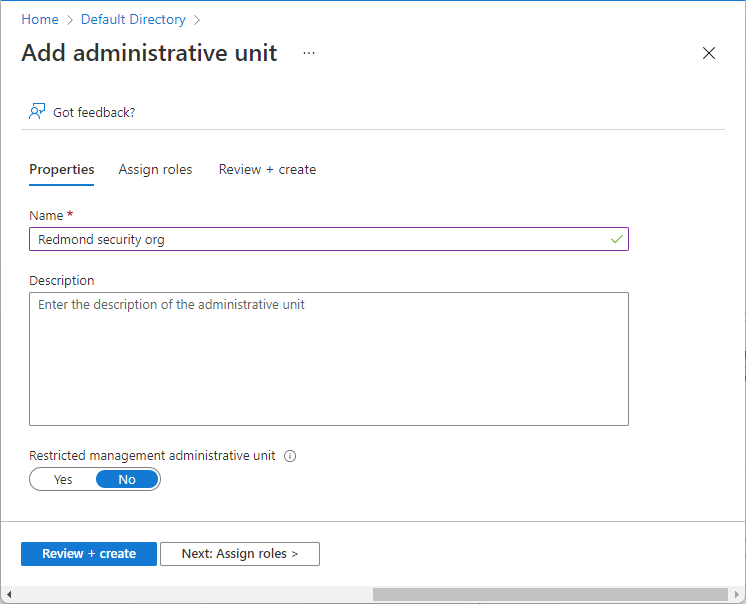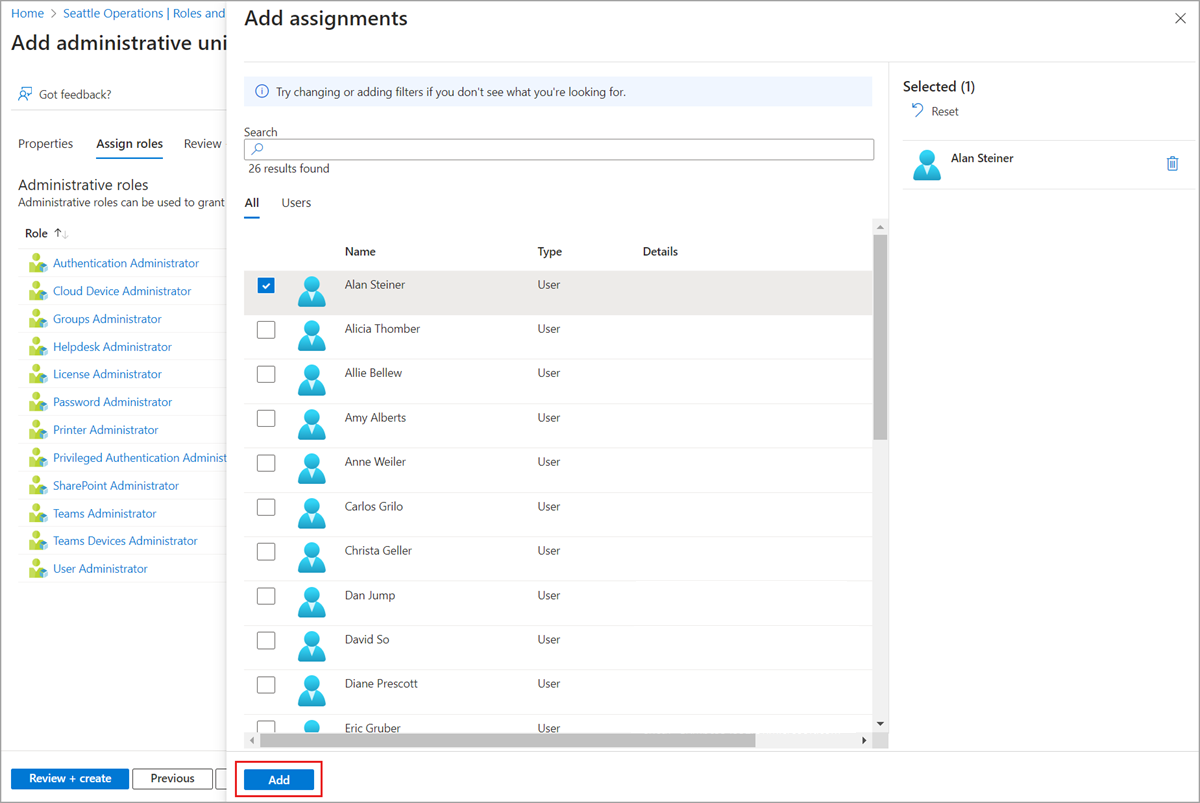Note
Access to this page requires authorization. You can try signing in or changing directories.
Access to this page requires authorization. You can try changing directories.
Important
Restricted management administrative units are currently in PREVIEW. See the Product Terms for legal terms that apply to Azure features that are in beta, preview, or otherwise not yet released into general availability.
Administrative units let you subdivide your organization into any unit that you want, and then assign specific administrators that can manage only the members of that unit. For example, you could use administrative units to delegate permissions to administrators of each school at a large university, so they could control access, manage users, and set policies only in the School of Engineering.
This article describes how to create or delete administrative units to restrict the scope of role permissions in Microsoft Entra ID.
Prerequisites
- Microsoft Entra ID P1 or P2 license for each administrative unit administrator
- Microsoft Entra ID Free licenses for administrative unit members
- Privileged Role Administrator role
- Microsoft Graph PowerShell module when using PowerShell
For more information, see Prerequisites to use PowerShell.
Create an administrative unit
You can create a new administrative unit by using either the Microsoft Entra admin center, Microsoft Entra PowerShell, or Microsoft Graph.
Tip
Steps in this article might vary slightly based on the portal you start from.
Sign in to the Microsoft Entra admin center as at least a Privileged Role Administrator.
Browse to Identity > Roles & admins > Admin units.
Select Add.
In the Name box, enter the name of the administrative unit. Optionally, add a description of the administrative unit.
If you don't want tenant-level administrators to be able to access this administrative unit, set the Restricted management administrative unit toggle to Yes. For more information, see Restricted management administrative units.
Optionally, on the Assign roles tab, select a role and then select the users to assign the role to with this administrative unit scope.
On the Review + create tab, review the administrative unit and any role assignments.
Select the Create button.



